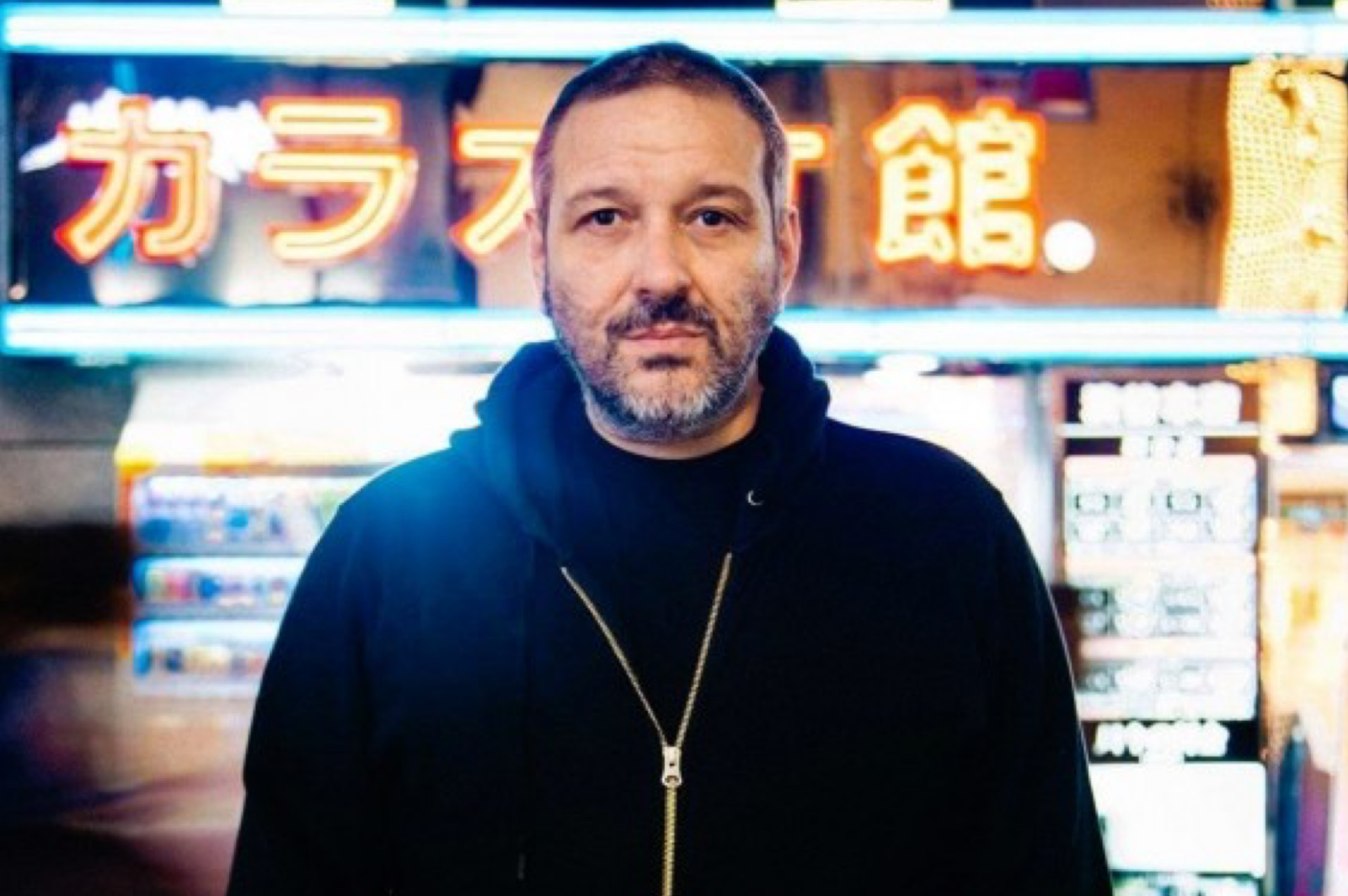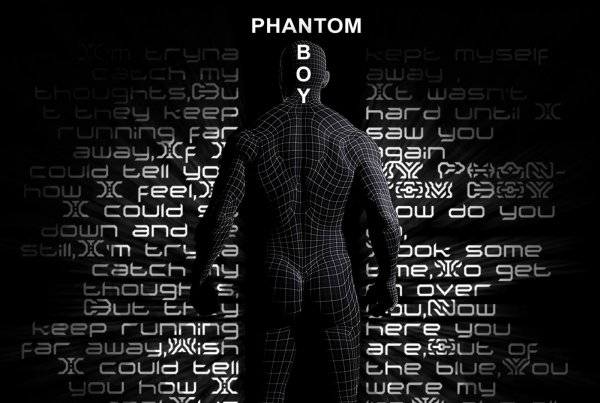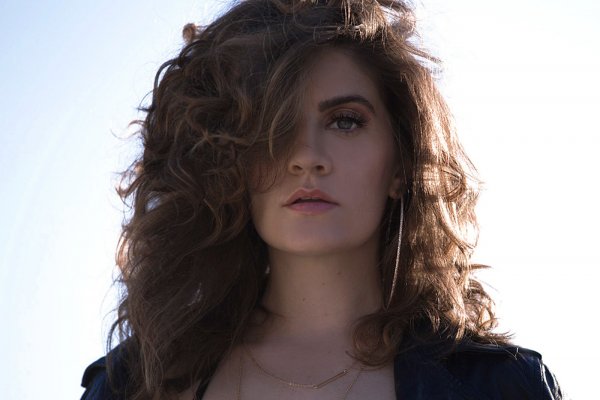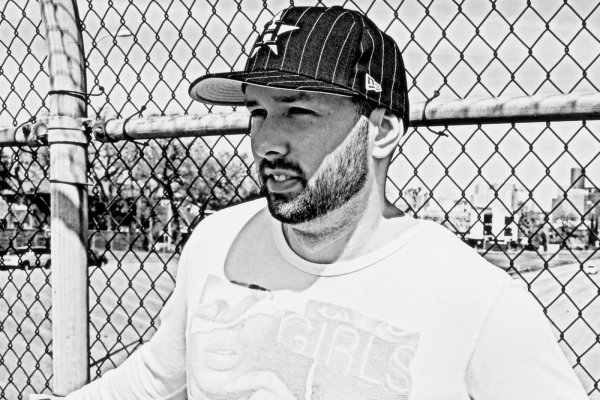Phil K Uncut
There are a few things you probably don’t know about Phil Krokidis. If you’ve met him, you will know him as someone who is not afraid to call a spade a spade, but underneath his straight talking pragmatism lies a creative genius and technical wizard who’s not afraid to try anything at least once. When most of us were still in nappies, or a figment of our parents imagination, Phil K was already head over heels in love with music. His first gig was at a school disco in ’85, when even outside the school gates, music and parties were a million miles away from what they are now. It’s time to rewind the track a long way back and start right at the beginning of a colourful career that spans over thirty years with Melbourne veteran producer and DJ Phil K.

Phil’s Mobile Disco
We’ve all got to start somewhere, and for Phil, it all began working for a mobile disco hire company, back in the days when it really was about fairy lights and funk. So how did Phil’s mobile disco go down? ‘Actually, it was Sandy’s mobile disco,’ laughs Phil. ‘There were two guys were both called Sandy, who ran a shop.’ Young Phil used to go pass the shop when he was first interested, gazing through the window with the same hungry look most tweenagers save for the bottle-o they aren’t allowed to buy from. For in there, more lipsmacking than your first pash, he spotted his first ever pair of 1200s.
‘After I found out about mixing aged about 12, I knew I wanted to DJ. I had Technics turntables in 1984. At that point you were you either playing music with drum machines or playing rock. There was no in between. Drum machines was New Order, INXS, Grandmaster Flash, Madonna - basically anything that had a programmed beat. What was also popular and pretty cool around that time that is seeing a bit of a resurgence now is Italo disco.’ At the time it was a really underground sound. Disco had finished and people like Alexander Robotnic were making waves in a European undercurrent. ‘A lot of the riffs were really bad, but the drum programming was colourful. It was old drum machines, 606s 707s Rolands some of the EMU samplers LINN drums and Oberheim DMX. A lot of those drum machines now are really sought after. There’s certainly been an Italo resurgence. People still make those kinds of grooves with a much-refreshed palette of sounds over the top.’
Sandy and Sandy saw Phil’s fascination and fed it. They started letting him mix records in the store. ‘I was really little, but they let me have a bash. They would laugh at me, but they would also show me how things worked.’ Phil started grafting for them; packing up leads, setting up equipment, doing odd jobs. And his hard work paid off, as Sandy and Sandy recognised Phil’s emerging talent and booked him to play at parties, where he got his first taste of playing to an audience.

Phil helping paint a mural in Northcote, circa 'back in the day'
Breaking Records: Why Phil’s Love Affair With Vinyl Is Definitely Over
While most DJs and industry heads reminisce the good old days of vinyl and pine for opportunities to put the needle back on the record, Phil is a full advocate for the endless possibilities of digital mixing. ‘Records were a means to an end,’ he says strongly. ‘For so long, vinyl wasn’t really a preference, it was a necessity. It wasn’t like you could mix with tapes. I remember listening to records even in the 80s thinking, imagine if I could change this record. Imagine a beat that started with eight bars instead of two; imagine it didn’t fade out there, imagine if I could chop that section there. My mind was always thinking like that, even from the early days.’ And it never stopped. When everything went digital, Phil’s creative energies could flourish and suddenly the possibilities were endless. Digital gave him the opportunity to explore musically and manipulate and change to suit the moment he was playing in – to respond to the crowd or a certain moment. ‘It got to a point when all these changes I could make could happen live, I didn’t even have to sit in the studio to do it. Suddenly everything I had dreamt about I could finally do. I could finally create a better arrangement than an original through the manipulation. And from that day onwards, I never played vinyl again. People are so precious about the way it sounds, but ultimately, I would say for the most part people just care about the content coming of the speakers. I don’t think format is key.’

But there’s another, more weighty reason why Phil’s monumental vinyl collection is gathering dust. ‘I always liked to have every possibility handy, so I used to carry up to four record crates a time to gigs. Most people carried one crate. A lot of people view the days of vinyl through rose tinted glasses, but if you never had to experience almost two decades of carrying four record crates through crowds and up stairs, you also probably didn’t get a hernia from lifting them off a baggage belt!’
In the late 90s, Phil worked as a second-hand record buyer and would travel to London and New York frequently to buy vinyl in vast quantities. ‘I would go to every shop and second-hand market, trawling everything. I had my glory days with vinyl. I played it, I collected it, I went through extreme lengths to acquire it. I searched high and low for the best. It was good fun. It was a challenge, a chase, a game. Once something was out of press, it was out of press. You couldn’t go and download it from Beatport or burn it from your mates copy. I’d fly to London with shopping lists to buy records you couldn’t get anywhere else on behalf of labels and DJs. At the time I was managing DMC in Prahran. I imported 2-3000 records a week. I bought records nobody else could buy. Has anyone ever had to carry 100 twelve inches through the fucking Tube in the stinking heat of July? Perhaps you wouldn’t like records so much if you had.’

The Sunny Days of Zero Tolerance
Phil released his first record, Summer Breeze in 1996, co-produced with Ivan Gough and Andy Page as the Free Radicals. In 1998, his label Zero Tolerance blossomed from the studio above DMC records. It was an exciting time for Melbourne music, with some great minds investing in early ideas.
‘At that time I’d been going over to London since 1994. After doing business with so many record labels and hanging out with the world’s most famous DJs, I realised that my calling wasn’t just about being a DJ, it was about creating a label and a community, building a collective of artists who believe in our musical ethos and supporting them through the label. The record shop was a community; people would hang out there, listen to records, then go upstairs to the studio and make records. It was around then that we started Sunnyside parties, where my closing sets became a huge talking point. The scene revolved around the label and the night cemented its place in Melbourne history. We laid claim to a couple of sounds, that came out of the label and the studio, a minimal dark progressive sound, that eventually evolved into a new school kind of breakbeat sound.’

But who knew that Phil K was actually a secret junglist. ‘I was such a trainspotter and so into the music I was making that I couldn’t go to house music nights, I was too critical – it was like work. The only way for me to go out and enjoy myself was to go to jungle parties. I used to go to Panic from around ‘94 for big rave ups. It was my happy place. After a while I started to find these weird records that had these fantastic progressive house A sides with odd B sides like jungle composition but at a house speed. I was like fuck this is really cool. The influence of jungle came in and I wasn’t afraid to mix them in. It really stood out in my sets. I started doing it more because quite obviously, people were jacking to it.’
‘Big beat had just emerged at the time, but it was too funky and rocky for me. The speed of breakbeat started coming through at that time. Followed by weird records at a similar tempo with a spacey atmosphere over the top. I couldn’t find enough of them, so I had to go in the studio and make them myself. That’s when people began identifying me as a breakbeat DJ. All of a sudden, I was Phil K who played breaks. But I appreciate that things comes in cycles. If that was what people were enjoying and booking me for, then so be it.’

The Pioneer’s Pioneer
By chance, in the mid 90s when Phil was working at DMC, a sales representative walked into the shop from Pioneer, asking if they wanted to stock their equipment. Back then, Pioneer made karaoke machines and car stereos and hadn’t branched out to become the music tech juggernaut they are today. Their full potential hadn’t even nearly been realised. Phil had been using the DJM500 mixer for ages and couldn’t speak highly enough of it. When the rep asked Phil to elaborate on what he liked, Phil was quite happy to wax lyrical, but was surprised by the guy’s answer. ‘I couldn’t believe it,’ said Phil. ‘The guy was telling me that he had been to every DJ and record store in Melbourne and that everyone had basically told him to fuck off. To which I said, “this is grouse…we’ll be the first ones to stock Pioneer. Send as many as you can!” We became the only shop in Melbourne to stock and promote Pioneer mixers and CDJs. Their sales went through the roof, initially just through what we sold at DMC.’
With a knock on effect, Phil’s horizons were all of a sudden broadened beyond his dreams. ‘Pioneer rewarded my passion for their equipment by inviting me to South East Asia to teach people how to use it. Before I went to Singapore for the first time, they gave me an EFX500. Up until that point, I had never used an FX unit before and there were never any effects units that were geared towards DJs. I had no manual and wasn’t sure how it was supposed to work, but I put myself under pressure to work it out. Before I knew it, I was busily blowing my mind creating some of my first loops. When I finally went to Singapore. I walked into the room and set up the equipment – you had to route the FX unit through the mixer. I put a track, put the level up engaged the loop. The Japanese guy looked at me, stunned. Unbeknownst to me, Pioneer were at that time busily inventing the DJM600, which nobody, including myself had heard of yet. The biggest upgrade with the DJM600 was that it had a sampler on it and the capcity to do loops with it. What I didn’t know was that the EFX500 wasn’t supposed to be able to create loops.’

“You can’t do loops on the EFX500!” says the engineer who had flown out from Japan to co-host the workshop. But that was exactly what Phil had done. ‘I showed him how I did what I did and he looked at me, like fuck! He got on the phone and after speaking to someone in very fast Japanese.’ After more frantic exchanges in Japanese down the phone, before Phil knew it, he had locked in for a trip to Japan the following week to explain exactly how he had done that to their equipment “We just developed a new machine that does loops and you are telling us you can make loops on our old machine. Did we waste our time making this?’” the Japanese guy said..
In Japan, Phil did a performance for the engineering team. They were shellshocked. ‘The Head of Pioneer came in and said to the staff, ”whatever he tells you to do, do it! Whatever he tells you to make, make it.” It was the start of a great working relationship and a lot of flights back and forth to Japan. “It’s unbelievable to think that some of the features we worked on then are a normal part of a DJs arsenal now . I’m not going to say I invented it, but I was certainly part of its initial inception. They took away what I was doing and turned it into an automated function. Press the button and it happens. There are functions that people still use today that I was directly involved in creating. It’s a great feeling. To this day I still have a strong connection with Japan and fly back to work regularly. I can call them anytime I want. We’ve got some amazing stuff in the pipeline, but I can’t reveal too much now.’

The Roots of Burma
Working with Luke Chable as Lostep in the early 2000s, things went from strength to strength. Through established connections and a certain element of being in the right place at the right time, Phil managed to drill into the tastes of the time and to a certain extent fly the flag for prog breaks, putting Australia on the map globally. ‘Luke and I wrote ‘The Roots’ in my lounge room at my house on a shitty PC, no soundcard, no nothing, just an office PC with a QWERT keyboard. Then, I played it to Dave Seaman and he was like “fuck yeah this is good, how about I put it on my Global Underground Melbourne CD?” You can’t say no to that. I finished the track and gave it to Dave. And Dave wanted more.’
On the back of this unexpected success, creative juices were flowing. It was time to make another single. ‘Luke came to my house. It was a Monday. We needed inspiration. We used to go to Borders music on Mondays. They had an incredible selection of world CDs and music you just couldn’t find elsewhere, but they wouldn’t let you listen to the CDs. I had hustled a good relationship with the guys who work there, as I explained we bought music to sample. They let us listen.’ Back at Phil’s house and feeling fully inspired, Luke and Phil set to work on ‘Burma’ arguably one of the most epic compositions of their careers. ‘It was such a weirdly musical piece of music. It didn’t take us long to get the main theme of the record, but at that point arrangements were stumping us; we needed some inspiration on how to make It into a club record.One night, We went to Bennett’s Lane jazz club with Andy Page, whose then girlfriend Fiona Burnett was playing in her quartet there. Sitting there, listening to the band was like a lightbulb moment for me. I observed the composition of the music. A jazz piece begins with a cohesive piece of music at the start, called the head, then rolls off into the improvised middle section, where players would go off on tangents, where everyone has a jam, then it’s back to the head. And sitting there, right then, I knew that was how we were going to arrange Burma. I’m proud to say Burma was inspired by world music, jungle and jazz arrangements.’
Phil got Burma in the hands of his friend Sasha. A week later, Phil got the call. ‘He rings me going “what the fuck is that? It’s ridiculous! I’m putting out an album next year, you are not allowed to release that record or give it to anyone, because I am putting it on my album.” I played it exclusively in my DJ sets for a year, but waited for it to come out on Sasha’s seminal Involver album. What was also pretty special was that only recently, Sasha played with an orchestra at the Barbican theatre in London and chose Burma as one of the live tracks he played, 14 years after its release. To hear it with a string section was unbelievable.’
Phil made his name as a pioneer of progressive breakbeat, but this tag happened pretty much by mistake. He is proud to produce and play across the board, and the idea of genre isn’t something he’s keen on being confined by. Plus often the labels attached to music don’t often stick true to an artist’s intention. ‘We might make something we call breakbeat and someone might turn around and call it something else. In the late 2000s, the name electro was bandied about a lot. The electro of that era had no association with how I view electro in my mind. It had no real resemblance to the original form. People rename and in my opinion, through trends of the time, incorrectly label things. They call things what they want, who knows what they call me! In all honesty, I’m not really that concerned. For me it’s just a matter of making it and expressing it and getting it out there.’
Where We’re Sitting Now
When I caught up with Phil he was fresh out of another day in the studio, working with Danny Bonnici on a project for indigenous band Yothu Yindi, remixing their music for upcoming live shows. ‘They are going back on stage,’ says Phil ‘and we are updating all their music to give it a modern, electronic feel. We are working on half a dozen of their old compositions, piecing them all back together, basically taking the message from the music and giving it new clothes and making it relevant for a new generation, as the message is the same and as relevant as ever. They’ve got some pretty huge shows booked this season. I felt like I had an obligation to do it, I have respected their music for years. Personally, I don’t feel I am worthy of being allowed to play so intimatelly with their catalogue, but if they feel I have something of value to add I am excited to do my bit and see them back on stage.
The Yothu Yindi Treaty project wasn’t just any day in the studio. Phil was privy to some surreal goings on as the project has evolved. ‘Being in the studio has been a wild experience. “Gavin Campbell who is the director of the project was told by an elder that the ancestors were very happy for everything he is doing to get the message back out there. Throughout the whole project, it felt like we were being propelled by a force, that perhaps the people who aren’t even alive anymore were influencing. And without even lying to you, today I felt on multiple occasions that there were people around us and they were guiding us creatively to come up with something. The way some things were falling into place, we were looking at each other going how did that happen? It was really rewarding. On more than one occasion, there were tingles up and down our spine. I’ve never felt like that in studio before.’

Busy as ever, the Treaty Project isn’t the only thing Phil is busy with. He still DJs often both in Melbourne and internationally. And as ever, you can expect and eclectic mix of the unexpected. ‘I love the element of surprise in a mix, or doing something different altogether I’ve been booked to play a 6hr disco set at Brown Alley in January. I play across the board. Anything from 100 or 90 to 130 bpm whatever genre. That’s the beauty of playing with your laptop and having access to 10,000 records on the drive. All you need to have is the enough technical ability to string it all together and make it all danceable.’
In 2003, Phil released a Balance Series with two CDs, a Breaks Mix and a House mix, which won the award DMA for Best Mix CD in that year. Phil’s latest Balance mix was for the 50th Podcast was launched a couple of months ago and covered a lot of ground, capturing a spectrum of music and multiples sound textures from the last 20 years, with everything from classic Matthew Jonson, Peverelist and Pearson Sound to Kuniyuki Takahashi’s stunning ‘The Puzzle’. He’s also back in the studio with Danny Bonnici working as Digital Stars, which is the current working name of the more electronic pieces and Analog stars for the more housey stuff. It’s also exciting to hear of more Lostep productions on the horizon with Luke Chable, and a new experimental techno project with a robot drummer. There’s certainly one thing for sure – that is whether you are on a dancefloor enjoying one of Phil’s sets, or see his name on production credits, it’s assured to come with a veteran standard hallmark of quality. We hope to bump into him dancing to many a secret jungle set, hear him arguing about genre confines and refusing to play vinyl for another three decades into the future.
Phil K – never change – we salute you!




